From the days of Marilyn Monroe to the era of contemporary fashion influencers, blonde hair has been an emblem of beauty, individuality, and allure. For many, this sun-kissed shade isn’t just about fashion; it’s an identity. However, there comes a time when even the blondest of blondes notice an unexpected transition — a shift to a darker, brown hue.
Mystifying and sometimes downright distressing, this change leaves one pondering, “Why did my blonde hair turn brown?”
This article delves into the science and secrets behind this transformation, offering insights and actionable prevention tips.
Buckle up as we embark on a journey through the strands of your hair, uncovering the mysteries of color changes and, most importantly, giving you the tools to keep that golden glow intact.
1. Genetics Play Their Part
We begin our exploration with the foundation of your hair color — genetics. Your DNA does more than just dictate your height or the shape of your nose; it also decides the hue of your tresses.
- Natural Progression: Often, children born with blonde hair see it darken with age. This is because the eumelanin (a type of pigment) levels increase as they grow.
- Late Bloomers: Some individuals might retain their blonde hair into their early teens or even adulthood before it starts to darken. This isn’t an anomaly; it’s just genetics at play.
- Reversion to Natural Shade: For those who’ve colored their hair blonde, there’s a possibility that it might revert to its natural shade over time, especially without maintenance.
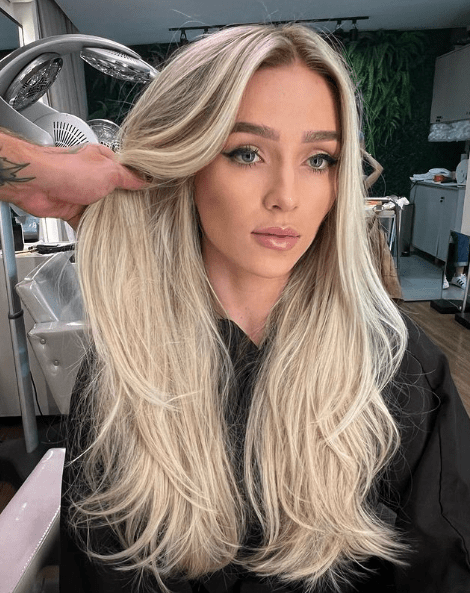
2. Sun Exposure Isn’t Always Your Friend
The sun has a paradoxical relationship with blonde hair. While it can lighten hair, prolonged exposure can have the opposite effects.
- UVA and UVB Rays: These are responsible for hair lightening, but they can also weaken the hair shaft, making it more susceptible to environmental pollutants that can darken it.
- Melanin Production: With excessive sun exposure, the hair might produce more melanin as a protective measure, leading to darker hair.
- Use Protection: Using hats or hair products with UV protection can mitigate these effects.
3. Hormonal Changes
Hormones can be sneaky. They affect more than just mood or metabolism; they play a role in the shade of your hair, too.
- Puberty: Hormonal shifts during puberty can result in a darker hair hue.
- Pregnancy: Expecting mothers might notice a change in hair color, among other hair-related changes.
- Medication and Birth Control: Some medications, especially hormonal birth control, can affect hair pigmentation.
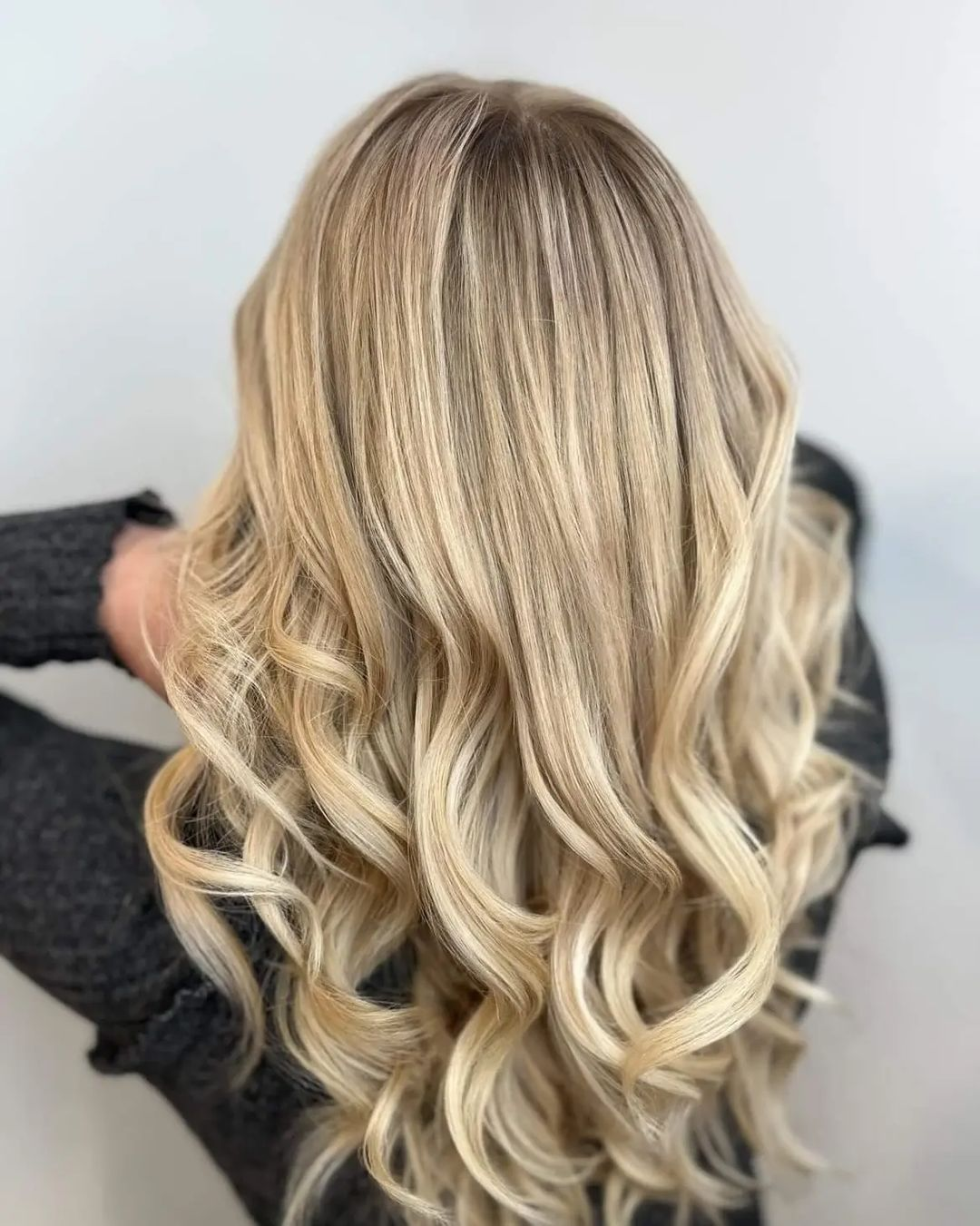
4. Your Diet Matters
The phrase “You are what you eat” isn’t just a cliche. The nutrients you consume can influence your hair’s shade and health.
- Deficiencies: Lack of vitamins like Vitamin C and E can result in hair darkening.
- Excessive Iron: Consuming a diet high in iron might darken your hair.
- Balanced Diet: Prioritizing a balanced diet with adequate vitamins can prevent unwanted hair hue changes.
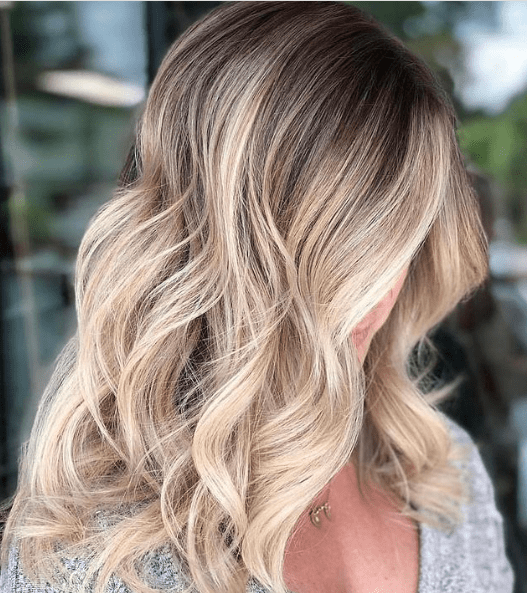
5. Hair Products and Treatments
We all love a pamper session, but did you know some products and treatments could be affecting your hair color?
- Buildup: Over time, shampoos, conditioners, and other hair products can leave a residue that affects hair color.
- Chemical Treatments: Repeatedly coloring or chemically treating your hair can lead to an eventual darkening, especially with sub-par products.
- Opt for Clarity: Clarifying shampoos can help remove buildup and restore your hair’s natural hue.

6. Water Quality
An unsuspecting culprit in the mystery of darkening blonde hair is water quality. It’s an element we often overlook.
- Hard Water: High mineral content in your water, especially copper, can result in darker strands.
- Chlorinated Pools: Swimming in chlorinated water can strip your hair of natural oils and then allow it to absorb chlorine, leading to a change in color.
- Filters to the Rescue: Using filtered water or shower filters can prevent this issue.

Comparison Table: Top Factors Leading to Blonde Hair Darkening
[table id=443 /]
7. The Mystery of Environmental Pollutants
We often forget that we live in a world filled with pollutants. These microscopic particles can be a nightmare for blonde tresses.
- Airborne Pollutants: Dust, smoke, and other pollutants can attach to the hair, leading to a darker appearance.
- City Living: Those living in cities are more likely to experience hair darkening due to pollutants.
- Cleanse and Protect: Regular cleansing and using protective hair serums can help combat these effects.

8. Stress Levels
While going gray from stress is a well-known trope, did you know stress can also affect blonde hair?
- Physical and Emotional Stress: Severe stress can cause a myriad of hair issues, including a change in color.
- Hormonal Imbalance: Stress often leads to hormonal imbalances that can, in turn, affect hair pigmentation.
- Relax and Breathe: Practicing relaxation techniques can benefit not only your mind but your hair, too.

9. Underlying Health Issues
Sometimes, the change in hair color might be a sign of an underlying health issue that requires attention.
- Thyroid Issues: Disorders related to the thyroid can lead to a change in hair color.
- Alopecia Areata: This condition can sometimes lead to pigmentation changes.
- Consult a Doctor: Any sudden and unexplained changes in hair color should prompt a visit to the doctor.
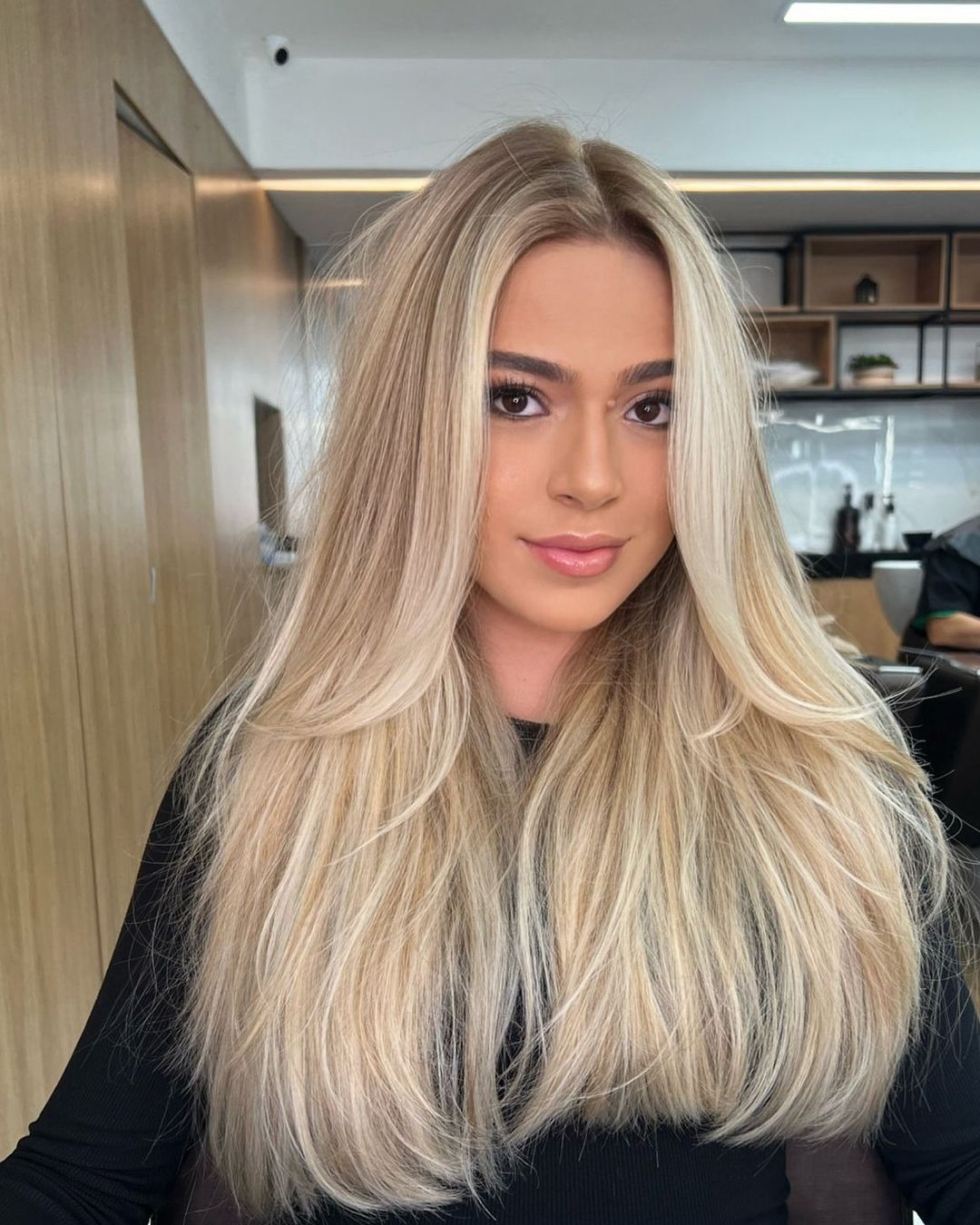
10. Aging Process
As the sands of time flow, our bodies undergo countless changes, and our hair is no exception.
- Decrease in Melanin: Over time, the production of melanin can change, affecting hair color.
- Not Just Gray: While many associate aging with graying hair, it can also lead to darkening in some individuals.
- Nature’s Course: While this is a natural process, a healthy lifestyle can slow down age-related changes.

11. Smoking Habits
Beyond its numerous health hazards, smoking can be a menace for your blonde locks.
- Tar and Nicotine: These components can lead to a yellowish or brownish tint in the hair.
- Reduced Blood Flow: Smoking affects blood circulation, which might indirectly affect hair health and color.
- Quit for Your Health (and Hair): Quitting smoking has countless benefits, including preserving your desired hair hue.
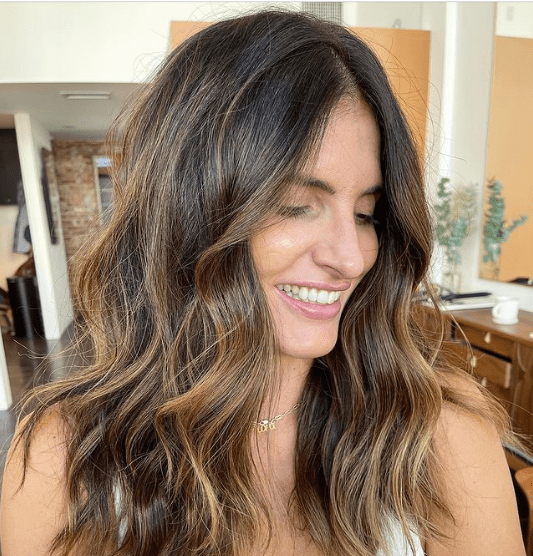
Keeping Your Blonde Hair Healthy and Strong
Blonde hair, whether naturally gifted or achieved through dye, is a striking feature that many cherish. However, the fairer shades of hair can often be more delicate and prone to damage than their darker counterparts. Fortunately, with the right care and a dash of diligence, blonde hair can be kept as strong and vibrant as ever.
Here’s how to ensure that your golden locks remain the crowning glory of your look.
Hair Care Tips for Healthy Blonde Hair
Deep Conditioning Regularly:
Why? Blonde hair, especially if bleached or colored, can lose its natural moisture, making it more susceptible to breakage.
How to Implement: Invest in a quality deep-conditioning treatment or hair mask. Apply it weekly or bi-weekly, depending on your hair’s needs. Let it sit for the recommended time, typically 20-30 minutes, before rinsing. This will help replenish lost moisture and strengthen the hair strands.
Avoid Over-Washing:
Why? Shampooing too often can strip your hair of its natural oils, leading to dryness and brittleness.
How to Implement: Reduce your washing frequency to 2-3 times a week. On off-days, if your hair feels oily, consider using a dry shampoo that’s formulated for blonde hair to refresh the roots without over-stripping.
Protect from Heat:
Why? Excessive heat styling can weaken the hair shaft, causing it to break.
How to Implement: Minimize the use of hot tools like straighteners, curling irons, and blow dryers. When you must use them, always apply a heat protectant spray beforehand. It creates a protective barrier, reducing potential damage.
Limit Sun Exposure:
Why? UV rays not only alter the color of blonde hair but can also make it dry and brittle.
How to Implement: Wear hats or scarves when spending extended time in the sun. Additionally, look for hair products that offer UV protection to safeguard against harmful rays.
Use Color-Safe Products:
Why? Regular shampoos might strip away the toners or color from dyed blonde hair.
How to Implement: Choose shampoos and conditioners formulated for color-treated hair. These products are gentler and aim to preserve the color for longer durations.
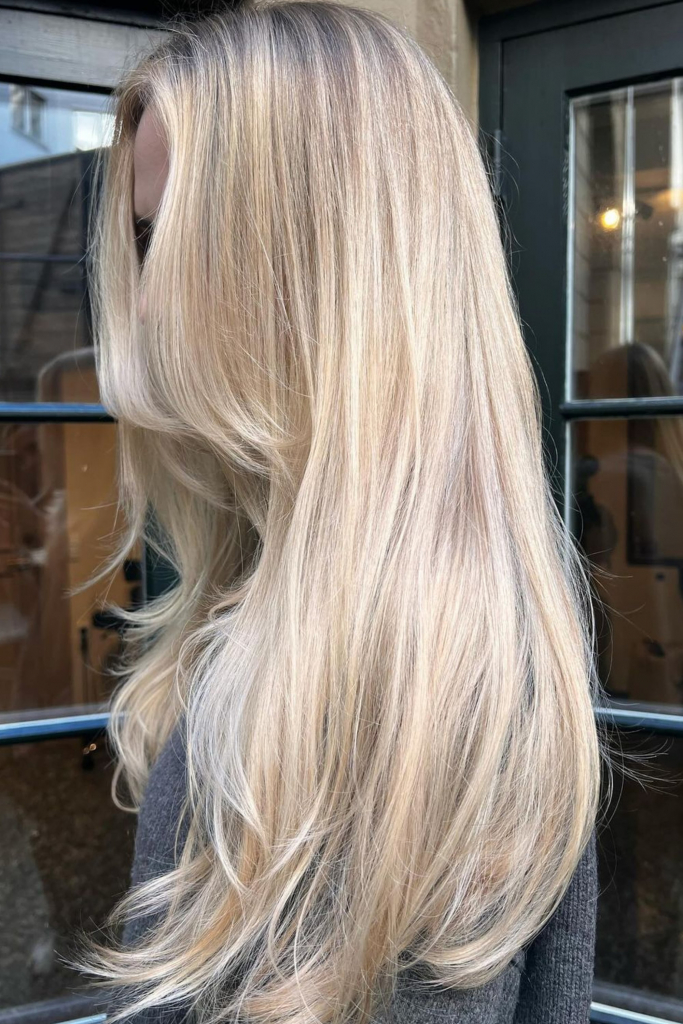
Regular Trims:
Why? Split ends can make hair look frizzy and unhealthy. They can also travel up the hair shaft if left unattended.
How to Implement: Schedule regular trims, ideally every 6-8 weeks, to keep your hair looking fresh and free from split ends.
Stay Hydrated and Eat Well:
Why? Hair health often reflects overall health. Proper hydration and nutrition can enhance hair strength and shine.
How to Implement: Drink plenty of water throughout the day. Incorporate a balanced diet rich in vitamins and minerals, particularly biotin, zinc, and proteins, which are essential for hair health.
Limit Chemical Treatments:
Why? Over-processing with treatments like perms, relaxers, or excessive coloring can severely weaken hair.
How to Implement: Space out chemical treatments and consider consulting with a professional hairstylist to ensure your hair remains undamaged in the pursuit of beauty.
Gentle Brushing:
Why? Rough brushing, especially when hair is wet, can lead to breakage.
How to Implement: Use a wide-toothed comb or a brush designed for wet hair to detangle after washing. Always start from the ends and work your way up to avoid pulling and snapping.
Rinse with Cold Water:
Why? Cold water helps seal the hair’s cuticle, making it smoother, shinier, and less prone to damage.How to Implement: After washing and conditioning, give your hair a quick rinse with cold water to seal in the benefits and enhance shine.Blonde hair, with its sunny allure, is a beautiful asset. Yet, without proper care, it can become lackluster and weak.
By incorporating the above-mentioned tips into your hair care routine, you can ensure that your blonde tresses remain not just a statement of style but also of health and vitality.
The journey to gorgeous hair doesn’t stop at achieving the perfect shade; it continues with the right nurturing steps that make every strand count.
Conclusion
In the vibrant tapestry of life, hair color changes are but natural strokes of evolving beauty. Whether you’re a natural blonde noticing a shift towards brown or someone seeking answers to maintain their dyed hue, understanding the myriad influences on hair color is empowering. From genetics to lifestyle, each factor offers a lesson, often guiding us toward healthier choices.
So, while you cherish those golden strands, remember that change is a part of growth, and every shade of hair is a testament to your unique journey.
